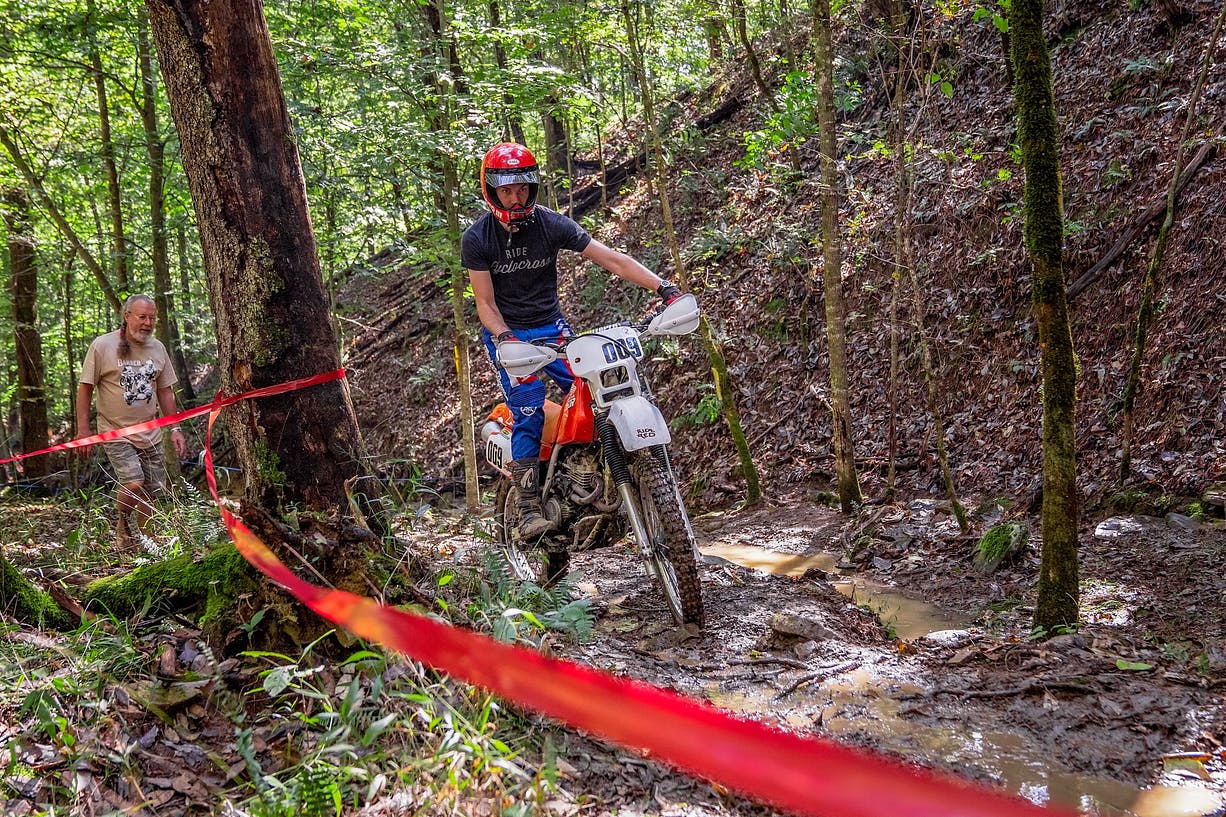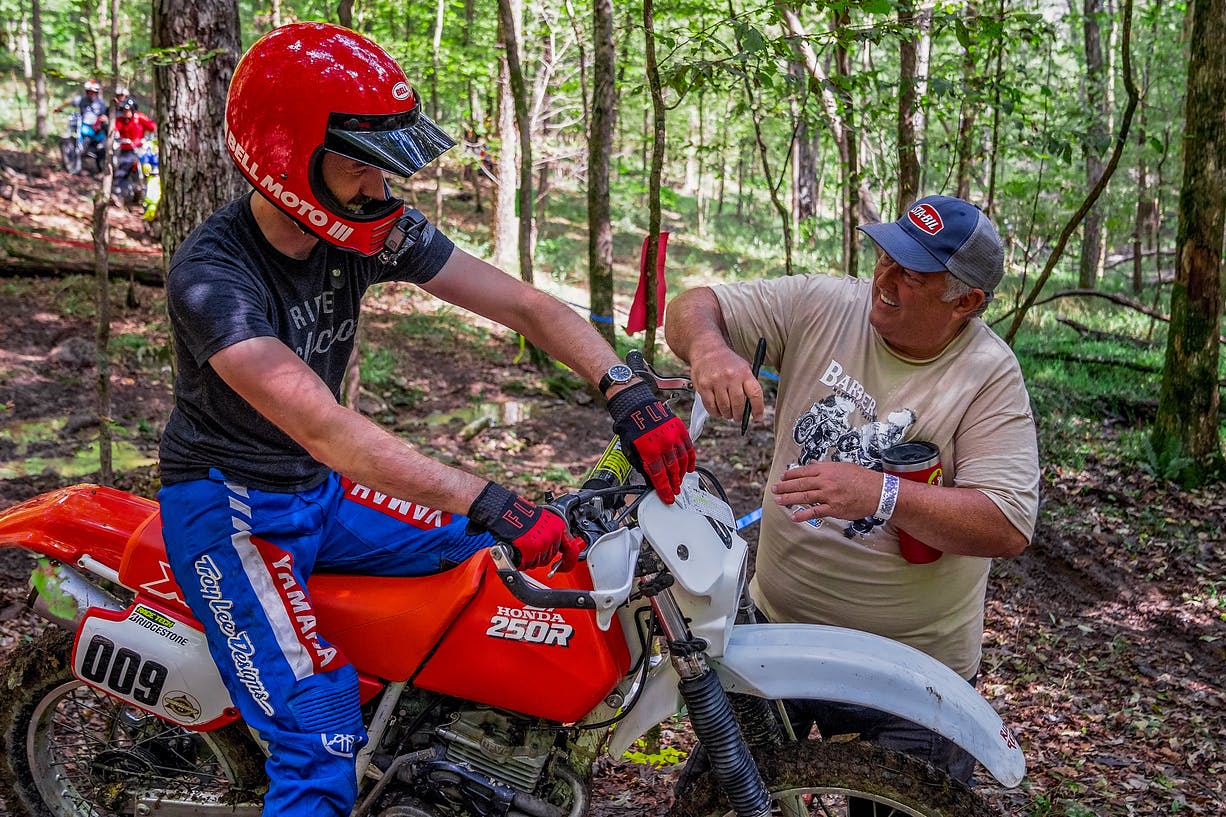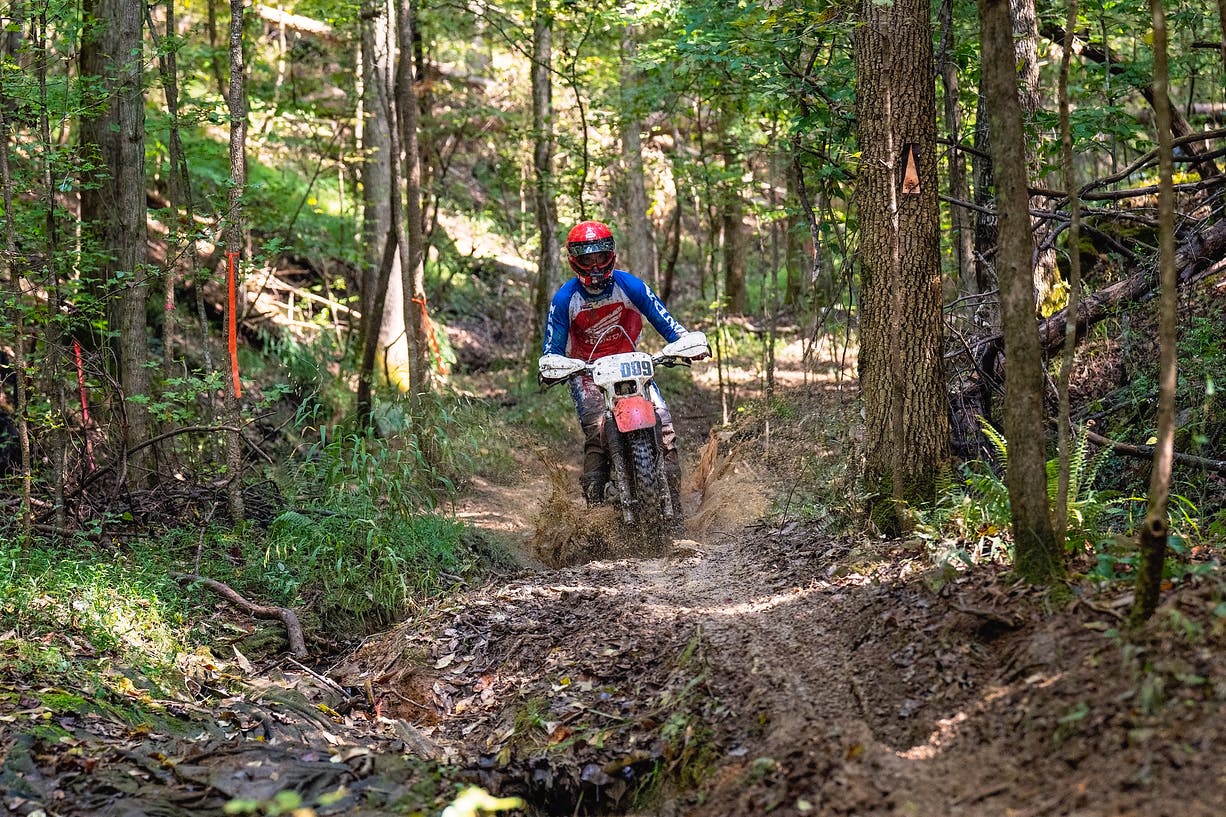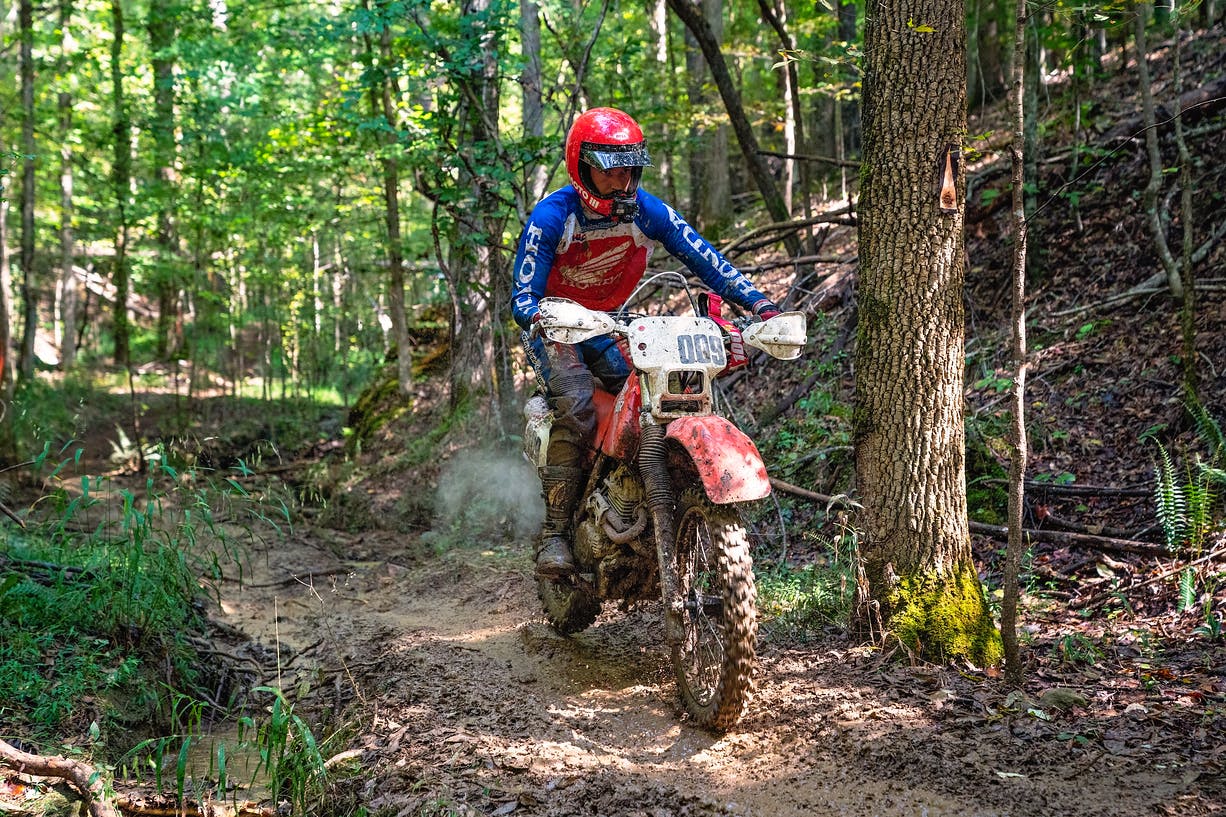Six Ways to Sunday: The motorcycle ballet
I’ve been thinking about standardized testing a lot lately, though I’m not entirely sure why. It might stem from the fact that many of the challenges I’ve faced while racing my 1989 Honda XR250R this year are basically standardized. There is a course that all must follow and complete, and we’re judged by how well we accomplished the task. It’s also been a game of trying to compare one thing to another thing. The latest challenge: trials.
The problem looked a bit like this in my head: Racing is to trials as football is to ballet.
Solving analogies like that is always fun—my personal favorite mind game. At first glance, this one seems a bit absurd, but hang with me for a second. I had a different sport plugged in there until the day after I finished my trials event Friday during the Barber Vintage Festival in Birmingham, Alabama. There were more than a few pieces of my body that were downright sore come Saturday. No other event during this Six Ways to Sunday challenge left me so full of beaten-up muscles. Why?
The analogy gives a few clues. Look at top-tier ballet dancers. They’re not fragile sticks. Misty Copeland is downright ripped, and for good reason. Precision movement and body control takes strength. That’s why football lineman—you know, the guys who look like walking refrigerators—do ballet to train for Monday Night Football. Strength without precision only goes so far, and vice versa. Trials is a motorcycle ballet, and my ex-runner body was just strong enough to pull it off, but it let me know the next day that I had reached my limit. Part of what caught me off guard about trials was something I should have known, but I failed a bit on my research.

Trials courses are laid out as small runs linked together by easy trails. Riders start from the registration table and head back into the woods, where one by one they attempt the slow-speed natural obstacles designed to test the riders balance and bike control. Keep your feet on the pegs for the whole run and you score zero. Dab a foot for balance, lean on a tree, or rest the skidplate on an obstacle and the score counts up to a maximum of five. The American Historic Racing Motorcycle Association vintage trials that I undertook is also a no-stop style, meaning riders are expected to stay in motion from when they enter the run to when the front axle breaks the plane of the exit gate. No hopping or trackstands to reposition or reassess one’s line choice. There were eight runs on the loop I tackled, but only during the riders meeting did I learn it was three loops that we would be doing, and there was a three-hour time limit.
This was plenty of time, but it meant no dawdling or extra-long walks to see how the runs changed after dozens of riders rode through after my first time … and second … and third. It also meant this would be the longest event I’ve done for this Six Ways project. A long, slow burn still consumes fuel, and my body was the fuel in this case.

Following the 9:30 a.m. riders meeting, it was back to my camp for a quick fuel top off and tire pressure check—10 psi front and seven rear. Then I kicked the XR over and headed into the woods with the small manilla cardstock scoring sheet clipped to my handlebars. The first circuit was a game of finding each run, locating a tree to lean the XR on, decipher the markings on the trees that delineated my assigned path, watch someone go through if I was lucky, and then hop on the bike and make my attempt. With my utter lack of experience and a machine that only marginally fit what a trials bike should do, I was assigned the number four line, which is the easiest and typically only has two turns per run. Sounds easy enough, right?
Lots of rain had fallen in the days leading up to Barber Vintage Festival. While the parking lots and open fields were starting to dry out, back in the woods it was still awful damp, so slick leaves and rocks needed to be approached carefully. Between the slick ground, way too tall gearing, and limousine turning radius, I knew I would be in for a challenge. But what I didn’t expect was the camaraderie of the other trials riders. As we each idled through the start gates and finessed our machines artfully over and around our routes, we cheered each other on and gave little hoots and hollers with each artful clutch slip or quick body position change that got a rider through their run. The observers were all smiles and full of encouragement during and after each run while marking our scores on our individual cards. Maybe it was just because I was clearly the knife at a gunfight, or maybe we were all just having fun. Maybe one led to the other.
Lowest score wins, and in the event of a tie, it comes down to who finished the quickest. Not many riders were really pushing for time, and overall the entire time in the woods felt like goofing around on motorcycles with friends. Just like how so many of us played “HORSE” on the basketball court so many years ago, this was the motorcycle version. “I bet I can ride over that there rock without putting my foot down.” “I’d like to see you try.” Except instead of Billy down the street, it was four-time International Six Days Enduro champion and AMA Hall of Fame member Terry Cunningham leading the way and making my line look easy on a borrowed Yamaha TY175.
With each loop, the runs and lines changed slightly due to tires chewing up areas that once had traction, and water getting splashed and carried onto roots. Just a little bit of overconfidence could really spiral out of control quickly. About halfway through the third loop my left forearm began to sound off from my constant clutch usage. I was only able to change the final drive ratio by a few teeth on the rear sprocket and a few on the front, meaning that even at idle the bike wanted to go at least walking speed. Since that would be too fast for many of the tight routes I was facing, I found myself slipping the clutch constantly while navigating the eight runs. Since the XR250 has a wet clutch, this is of little consequence to the friction plates, but my forearm was worn from nearly three hours of holding the lever against the heavy duty clutch springs I’d installed. Filing the clutch basket to make the action smoother is one thing I was thankful I’d done, but those HD springs might have been a bit of overkill all the way around.

Or maybe it was just that I was not physically prepared for the ballet. My friends and I like to joke about being “skinny fit,” which is to say we all appear fit, but without ever actually working out. A lot of my personal fitness is carry over from miles and miles of trials days, and that was the better part of a decade ago. Now I do more 16-ounce curls than real weightlifting. That lack of fitness showed when I woke up on Saturday and was sore just about everywhere. My big heavy iron horse navigated trials better than it had any right to, but it certainly demanded more from me to do it.
The weekend could have ended there, but I didn’t drive 900 miles to sit by the van and watch everyone else ride motorcycles. That’s why the XR went up on a stand and I swapped the drum-brake front end back to the factory disc brake and entered the cross country race on Sunday. It was a sloppy course with a couple aggressive hill climbs that tested my dedication to hold the throttle open while pointing straight at a rock ledge, but boy was it fun to churn out three laps of the long course during the one-hour race. It felt a bit like redemption from the mess of a ride I had back in May during the Heartland Motofest.
Even just a couple days after my first trials event, I could tell how those small calculated movements were actually woven into all the motorcycle riding I had done previously. My big XR was the lineman working on his plié in a room full of dancers ready to go en pointe. Multiple times in the technical section of the cross-country course I could look up the trail and pick my line and just roll right into executing it without a second thought. Removing that second guess or hesitation felt like a superpower when I first noticed it happening. I foresee more trials events in my future as I work to build more on-bike skills. Maybe a more tailor-made bike, if I can sneak one into the garage without the missus noticing.
Now I’ve crossed off five disciplines (a couple of them multiple times!) on my to-do list for this project, which leaves one. While at Barber, I picked up a crucial piece for the sixth and final event on the schedule. It’s going to be a while before the course will be ready, because the weather needs to shift a whole lot, but from everything I’ve heard it will be worth the wait. The ballet is over; it’s time to go back to the brute force races. In the cold.






